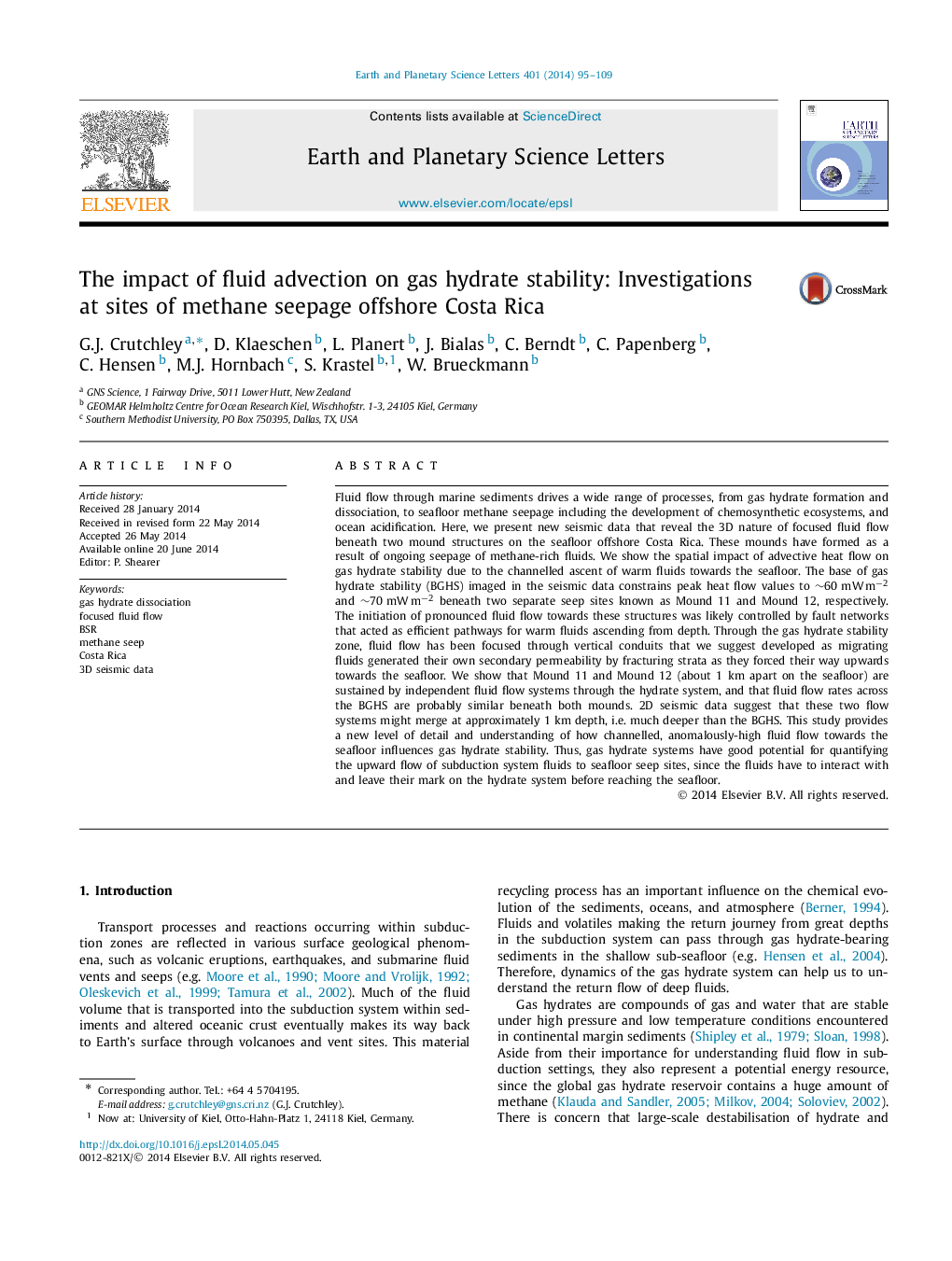| کد مقاله | کد نشریه | سال انتشار | مقاله انگلیسی | نسخه تمام متن |
|---|---|---|---|---|
| 6429183 | 1634755 | 2014 | 15 صفحه PDF | دانلود رایگان |
• We map out the 3D extent of gas hydrate stability beneath two methane seep sites.
• Focused fluid flow has sustained large-scale gas hydrate instability.
• The two seeps likely have the same deep fluid source, despite shallow differences.
• Fault networks influenced the initiation of advective flow through the hydrate system.
• Ongoing flow towards the seeps is likely sustained by networks of hydrofractures.
Fluid flow through marine sediments drives a wide range of processes, from gas hydrate formation and dissociation, to seafloor methane seepage including the development of chemosynthetic ecosystems, and ocean acidification. Here, we present new seismic data that reveal the 3D nature of focused fluid flow beneath two mound structures on the seafloor offshore Costa Rica. These mounds have formed as a result of ongoing seepage of methane-rich fluids. We show the spatial impact of advective heat flow on gas hydrate stability due to the channelled ascent of warm fluids towards the seafloor. The base of gas hydrate stability (BGHS) imaged in the seismic data constrains peak heat flow values to ∼60 mWm−2 and ∼70 mWm−2 beneath two separate seep sites known as Mound 11 and Mound 12, respectively. The initiation of pronounced fluid flow towards these structures was likely controlled by fault networks that acted as efficient pathways for warm fluids ascending from depth. Through the gas hydrate stability zone, fluid flow has been focused through vertical conduits that we suggest developed as migrating fluids generated their own secondary permeability by fracturing strata as they forced their way upwards towards the seafloor. We show that Mound 11 and Mound 12 (about 1 km apart on the seafloor) are sustained by independent fluid flow systems through the hydrate system, and that fluid flow rates across the BGHS are probably similar beneath both mounds. 2D seismic data suggest that these two flow systems might merge at approximately 1 km depth, i.e. much deeper than the BGHS. This study provides a new level of detail and understanding of how channelled, anomalously-high fluid flow towards the seafloor influences gas hydrate stability. Thus, gas hydrate systems have good potential for quantifying the upward flow of subduction system fluids to seafloor seep sites, since the fluids have to interact with and leave their mark on the hydrate system before reaching the seafloor.
Journal: Earth and Planetary Science Letters - Volume 401, 1 September 2014, Pages 95–109
